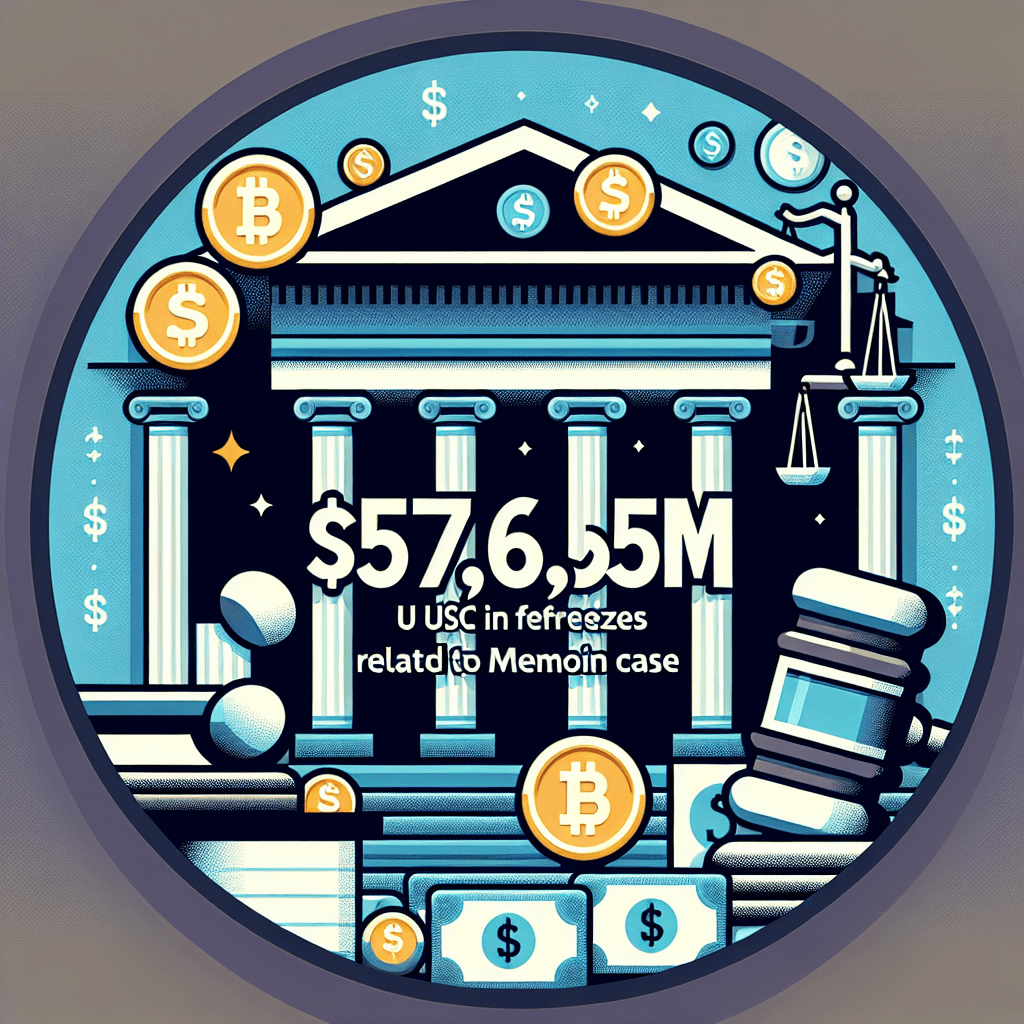U.S. Court Freezes $57.65M in USDC Related to Memecoin Case

Background of the Libra Class-Action Suit
On May 28, 2024, a judge in the Southern District of New York (SDNY) entered a Temporary Restraining Order (TRO) freezing approximately 57.65 million USDC. The freeze was sought by Burwick Law on behalf of plaintiffs led by Omar Hurlock, who allege that Kelsier Ventures and its co-founders—Gideon, Thomas and Hayden Davis—created the controversial Libra memecoin to mislead investors and siphon more than $100 million from liquidity pools.
Legal Proceedings and Next Steps
According to filing documents, the TRO invokes Federal Rule of Civil Procedure 65, granting immediate injunctive relief to prevent asset dissipation while the class-action progresses. A hearing is scheduled for June 9, 2024, at which the court will consider whether to convert the TRO into a preliminary injunction, effectively maintaining the freeze until the case is resolved or settled.
On-Chain Evidence and Technical Freeze Mechanism
Blockchain data reviewed on Solana’s explorer, Solscan, shows two wallets—3Fwr…ZQpK and 3nHw…xNgH—holding USDC SPL tokens were frozen at 03:15 UTC and 03:18 UTC, respectively. The first held roughly 44.59 million USDC, the second over 13 million USDC. Both were immobilized via Circle’s Multisig Freeze Authority, embedded in the Centre Consortium’s USDC smart-contract:
- Freeze function: centre.freeze(address account, uint256 amount)
- Keyholders: Five participating entities holding multisig approval rights
- Governance: Emergency button reserved for court orders and regulatory mandates
Blockchain forensics expert Dr. Emily Chen of CipherTrace commented, “This event underscores how USDC’s built-in freeze capability—while bolstering regulatory compliance—introduces counterparty and governance risks for token holders.”
Market Reaction and Price Impact
Following news of the freeze, USDC briefly traded at a 1.5% discount on decentralized exchanges on Solana, reflecting seller uncertainty. Major centralized venues saw only marginal spreads, as centralized platforms rely on Circle’s off-chain reserves rather than on-chain liquidity.
Regulatory and Compliance Considerations
The U.S. legal action arrives amid intensifying stablecoin scrutiny. In April 2024, the U.S. Securities and Exchange Commission issued subpoenas to several issuers regarding reserve attestations. Meanwhile, the Financial Stability Board and the Basel Committee are advancing global guidance on stablecoin reserve management. If the freeze becomes permanent, it may set a precedent for judicial enforcement over algorithmic or memecoin projects deemed fraudulent.
Technical Analysis of Smart-Contract Governance
- Shell Functions: USDC’s SPL contract includes
freeze()andthaw()to control token balances. - Access Control: Only Centre multisig keyholders can execute emergency freezes.
- Audit Trail: Each freeze is recorded on-chain, enabling civil discovery and chain-of-custody verification.
According to blockchain auditor Quantstamp, these governance patterns strike a balance between regulatory compliance and decentralization, but they also place significant discretion in a small group of keyholders.
Expert Opinions and Next Milestones
Legal analyst Sarah Rodriguez of FinReg Insights notes, “The SDNY’s willingness to freeze on-chain assets could encourage more class-action suits targeting smart-contract governance flaws.” Meanwhile, market strategist Alex Park of Meridian Capital predicts, “If affirmed, this freeze may fuel demand for truly non-censorable tokens, even at the cost of regulatory friction.”
“The case raises fundamental questions about trust models in programmable money—should code be immutable or subject to legal intervention?”
— Dr. Emily Chen, CipherTrace
Conclusion: Broader Impacts on Crypto Ecosystem
Beyond the immediate freeze, the dispute spotlights the trade-offs at the intersection of cryptographic enforcement and legal jurisdictions. As the June 9 hearing approaches, stakeholders—from stablecoin issuers to decentralized app developers—will be closely watching the outcome, which may reshape governance norms across the industry.